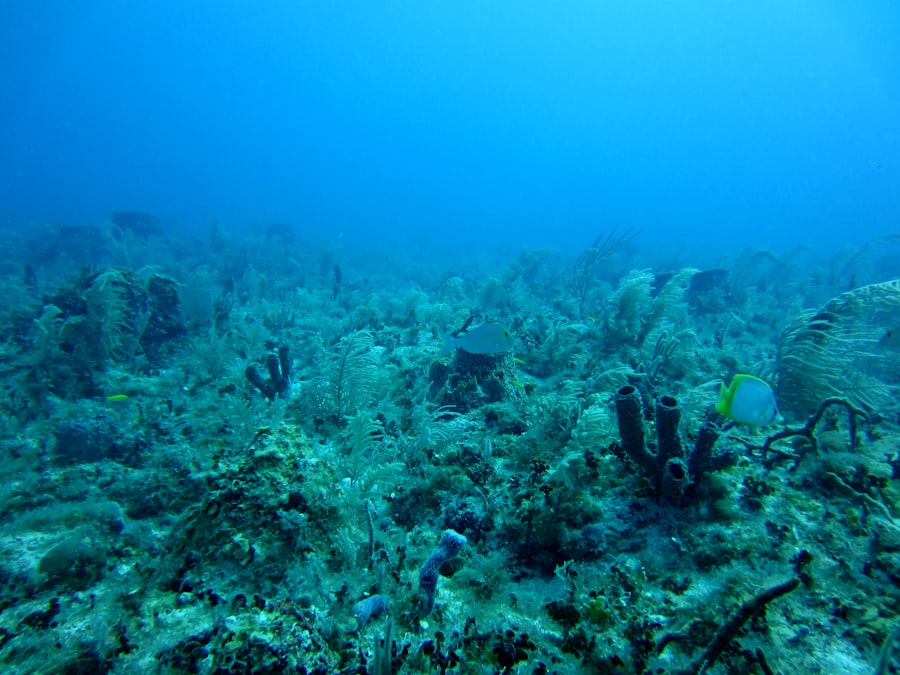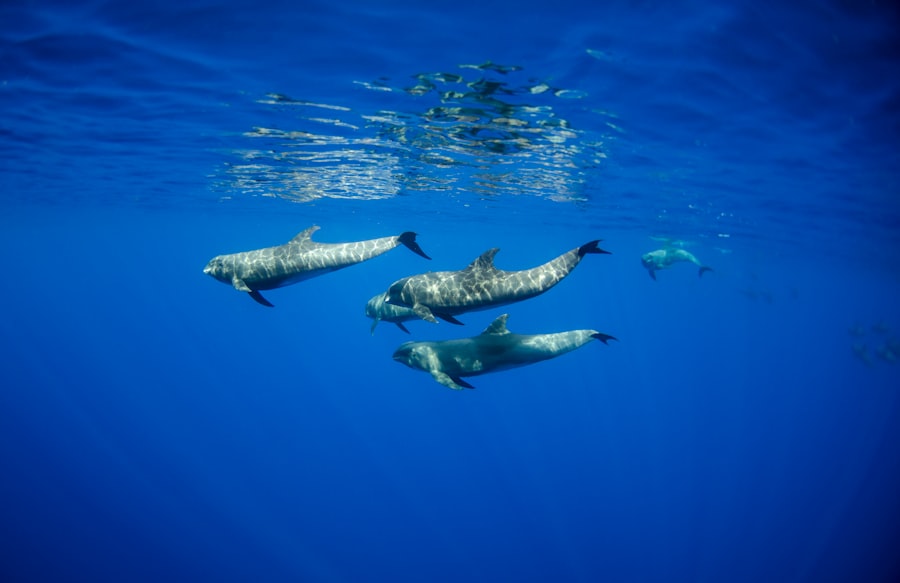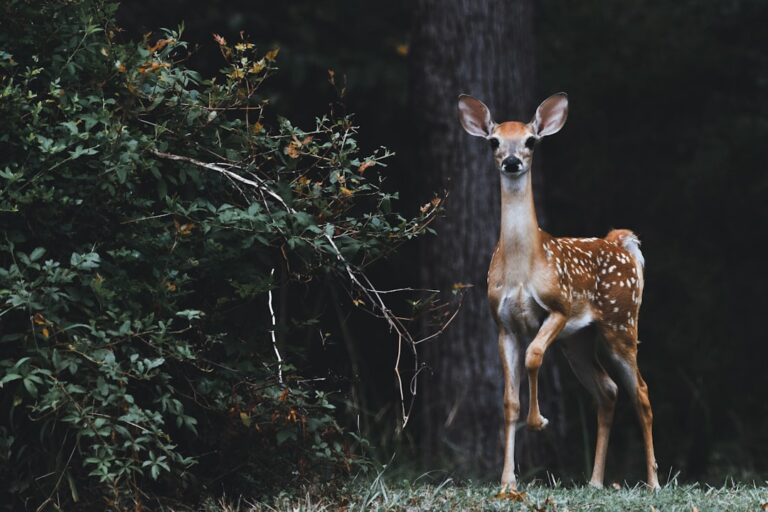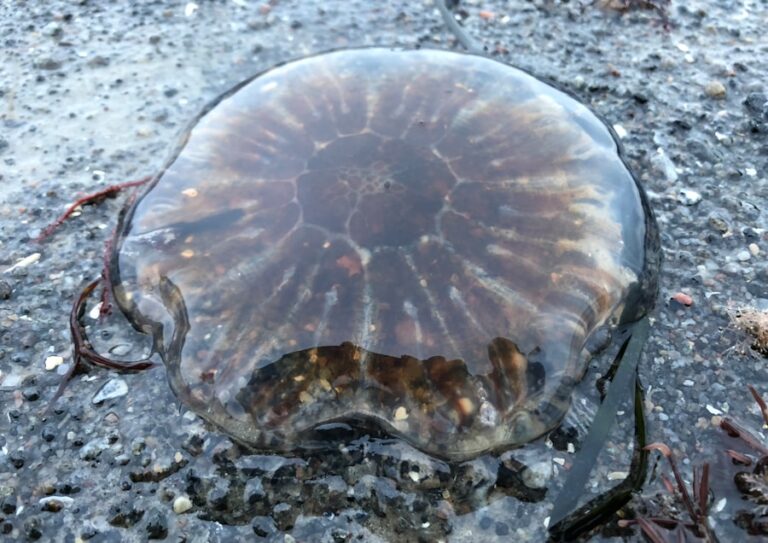The courtship rituals of octopuses are as enigmatic as the creatures themselves. These cephalopods, known for their intelligence and adaptability, engage in a variety of complex behaviors during mating that can vary significantly between species. The courtship process often begins with a male octopus displaying vibrant color changes and intricate body postures to attract a female.
This display is not merely for show; it serves to communicate the male’s fitness and readiness to mate. For instance, the male may exhibit bright colors and patterns while simultaneously performing a dance-like movement, which can include circling the female or extending his arms in a way that showcases his physical prowess. In some species, such as the common octopus (Octopus vulgaris), the courtship can be quite elaborate, involving a series of tactile interactions.
The male may gently touch the female with his arms, using specialized suckers to create a bond that is both physical and sensory. This tactile communication is crucial, as it helps to establish trust and reduce any potential aggression from the female, who may be wary of the male’s intentions. The courtship phase can last from several hours to days, depending on environmental conditions and individual behaviors, making it a fascinating subject for researchers studying cephalopod behavior.
Key Takeaways
- Octopuses engage in mysterious courtship rituals, often involving color changes, skin texture alterations, and intricate movements.
- The reproductive anatomy of octopuses is fascinating, with males using a specialized arm to transfer sperm packets into the female’s mantle cavity.
- Male octopuses exhibit intricate behaviors during mating, including displaying aggression towards rivals and performing elaborate dances to attract females.
- Chemical signals play a crucial role in octopus mating, with females releasing pheromones to attract males and communicate their receptiveness to mating.
- Female octopuses employ unique methods to select mates, such as assessing the male’s health, size, and ability to provide sperm before choosing a partner.
The Fascinating Reproductive Anatomy of Octopuses
The reproductive anatomy of octopuses is uniquely adapted to their aquatic environment and lifestyle. Male octopuses possess a specialized arm known as the hectocotylus, which is modified for transferring sperm to the female. This arm is often longer than the others and has a distinct shape that allows it to carry sperm packets called spermatophores.
During mating, the male uses this arm to insert the spermatophores into the female’s mantle cavity, where fertilization occurs internally. This anatomical adaptation not only facilitates successful reproduction but also minimizes the risk of injury during mating, which can be a concern given the aggressive nature of some female octopuses. Females, on the other hand, have a more complex reproductive system that includes an ovary and oviducts for egg development and laying.
After mating, females can store sperm for extended periods, allowing them to fertilize their eggs at a later date. This ability to delay fertilization is particularly advantageous in fluctuating environmental conditions, ensuring that offspring are produced when conditions are most favorable for survival. The eggs are often laid in clusters and attached to substrates in secure locations, showcasing the female’s instinctual drive to protect her progeny from predators.
The Intricate Behavior of Male Octopuses During Mating

Male octopuses exhibit a range of intricate behaviors during mating that highlight their adaptability and intelligence. One notable behavior is the use of camouflage; males can change their skin color and texture to blend into their surroundings while courting a female. This ability not only serves to attract the female but also protects the male from potential threats during this vulnerable time.
In some species, males may even mimic the coloration of females to avoid detection by rival males or aggressive females, showcasing their strategic thinking in navigating complex social dynamics. Additionally, males often engage in elaborate displays of strength and agility during courtship. They may perform acrobatic maneuvers or engage in physical contests with other males to demonstrate their fitness.
These displays can include rapid swimming, intricate arm movements, and even the use of jet propulsion to create impressive visual effects in the water. Such behaviors not only serve to impress potential mates but also establish dominance over competitors, ensuring that the most fit males have the best chance of successful reproduction.
The Role of Chemical Signals in Octopus Mating
| Chemical Signal | Function |
|---|---|
| Female Pheromones | Attract male octopus for mating |
| Male Pheromones | Induce female receptivity and egg-laying behavior |
| Chemical Cues | Help in identifying suitable mating partners |
Chemical signaling plays a crucial role in the mating process of octopuses, adding another layer of complexity to their courtship rituals. These cephalopods release pheromones into the water, which can convey information about their reproductive status and readiness to mate. For instance, females may emit specific chemical cues that signal their receptiveness to mating, while males can detect these signals using specialized receptors on their suckers.
This chemical communication allows for a more efficient mating process, as it helps both parties assess each other’s readiness without direct confrontation. Moreover, chemical signals can also influence mate selection and competition among males. Research has shown that males can detect pheromones released by rival males, which may inform them about the presence of competitors in the area.
This information can lead to strategic decisions regarding whether to engage in courtship or retreat to avoid confrontation. The ability to interpret chemical signals is essential for navigating the often competitive and aggressive mating landscape that octopuses inhabit.
The Unique Methods of Female Octopuses in Selecting Mates
Female octopuses employ various strategies when selecting mates, reflecting their complex reproductive behaviors and preferences. One common method is through careful observation of potential mates’ courtship displays. Females may assess the vibrancy of a male’s coloration, his agility during displays, and even his ability to fend off rivals before making a decision.
This selective process ensures that females choose mates with desirable traits that may enhance the survival chances of their offspring. In some species, females have been observed exhibiting cryptic behaviors during mate selection. For example, they may feign interest in one male while simultaneously assessing another from a distance.
This behavior allows females to gather information about multiple potential mates without revealing their preferences too early in the courtship process. Additionally, females may also engage in post-mating assessments by evaluating the quality of sperm received from different males, further influencing their reproductive success.
The Surprising Post-Mating Behaviors of Octopuses

Post-mating behaviors in octopuses are as intriguing as their courtship rituals. After mating, many female octopuses enter a phase known as brooding, during which they lay thousands of eggs and dedicate themselves entirely to protecting and nurturing them. During this period, females often stop eating altogether, focusing solely on guarding their eggs from predators and ensuring optimal conditions for hatching.
This self-sacrificial behavior highlights the intense maternal investment that characterizes octopus reproduction. Interestingly, some species exhibit unique post-mating behaviors that further enhance reproductive success. For instance, certain females have been observed engaging in aggressive behaviors towards potential threats while brooding, showcasing their fierce protective instincts.
In contrast, males may also display post-mating behaviors that include increased vigilance against rival males or even attempts to mate again with other females if opportunities arise. These behaviors underscore the dynamic nature of octopus reproduction and the various strategies employed by both sexes after mating.
The Challenges of Studying Octopus Mating in the Wild
Studying octopus mating behaviors in their natural habitats presents numerous challenges for researchers. One significant obstacle is the elusive nature of these creatures; many species are solitary and tend to hide in crevices or burrows when not actively courting or mating. This behavior makes it difficult for scientists to observe mating rituals directly without causing disturbances that could alter natural behaviors.
Additionally, octopuses are highly intelligent and capable of learning from their experiences, which means that repeated observations could lead them to alter their behaviors over time. Environmental factors also complicate research efforts; varying water temperatures, currents, and visibility can all impact mating behaviors and make it challenging to gather consistent data across different locations and times. Furthermore, many species exhibit different mating strategies based on local ecological conditions, necessitating extensive fieldwork across diverse habitats to gain a comprehensive understanding of octopus reproduction.
Despite these challenges, researchers continue to develop innovative methods for studying these fascinating creatures in their natural environments.
The Evolutionary Significance of Octopus Mating Strategies
The diverse mating strategies observed among octopus species offer valuable insights into evolutionary processes and adaptations within marine ecosystems. These strategies have evolved in response to various ecological pressures, including predation risks, resource availability, and competition for mates. For instance, species that inhabit environments with high predation rates may develop more elaborate courtship displays or increased vigilance during mating to enhance reproductive success.
Moreover, the ability of females to store sperm allows for greater flexibility in timing reproduction based on environmental conditions. This adaptation can be particularly advantageous in fluctuating habitats where food availability may dictate optimal breeding times. By understanding these evolutionary dynamics, researchers can gain insights into how octopuses have adapted over time to survive and thrive in diverse marine environments.
The Impact of Environmental Factors on Octopus Mating
Environmental factors play a crucial role in shaping octopus mating behaviors and reproductive success. Temperature fluctuations can influence metabolic rates and reproductive cycles; warmer waters may accelerate growth and maturation rates in some species while potentially leading to earlier spawning events. Additionally, changes in salinity or water quality due to pollution or climate change can impact reproductive health and success rates among octopus populations.
Habitat availability also affects mating dynamics; areas with abundant shelter provide safe spaces for courtship and egg-laying while reducing predation risks for both adults and offspring. Conversely, habitat degradation can lead to increased competition for mates as individuals are forced into smaller areas with limited resources. Understanding these environmental influences is essential for conservation efforts aimed at protecting octopus populations and ensuring their continued survival in changing marine ecosystems.
The Complexities of Parental Care in Octopuses
Parental care among octopuses is characterized by remarkable complexity despite its often short duration. Female octopuses typically invest significant energy into guarding their eggs until they hatch; this commitment can last several months depending on species and environmental conditions. During this time, females exhibit various behaviors aimed at ensuring egg viability, such as fanning water over the eggs to provide oxygenation or removing debris that could harbor harmful organisms.
Interestingly, once the eggs hatch, maternal care ceases abruptly; many female octopuses die shortly after their offspring emerge due to exhaustion from brooding and lack of food intake during this period. This phenomenon raises questions about evolutionary strategies regarding parental investment; while high maternal investment increases offspring survival rates initially, it also leads to high mortality rates for mothers post-reproduction. Understanding these dynamics sheds light on the trade-offs inherent in parental care strategies among cephalopods.
The Future of Research in Understanding Octopus Mating Dynamics
As research on octopus mating dynamics continues to evolve, new technologies and methodologies are being developed to enhance our understanding of these fascinating creatures. Advances in underwater imaging techniques allow scientists to observe mating behaviors in real-time without disturbing natural habitats, providing invaluable insights into courtship rituals and reproductive strategies across different species. Furthermore, interdisciplinary approaches combining behavioral ecology with molecular biology are paving the way for deeper investigations into genetic factors influencing mating preferences and reproductive success among octopuses.
As researchers continue to unravel the complexities of octopus reproduction, we gain not only a greater appreciation for these remarkable animals but also critical knowledge that can inform conservation efforts aimed at preserving their diverse populations in an ever-changing world.












